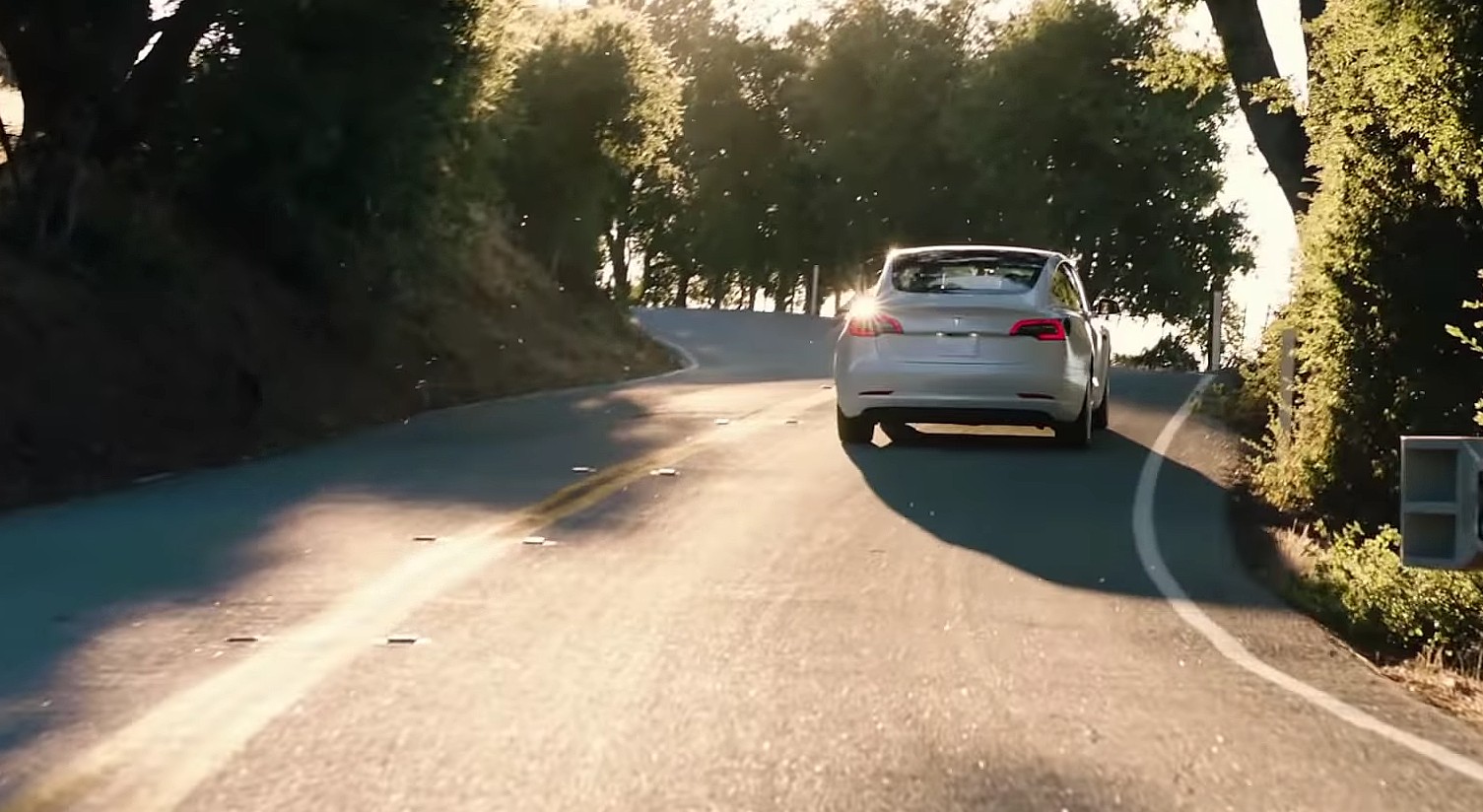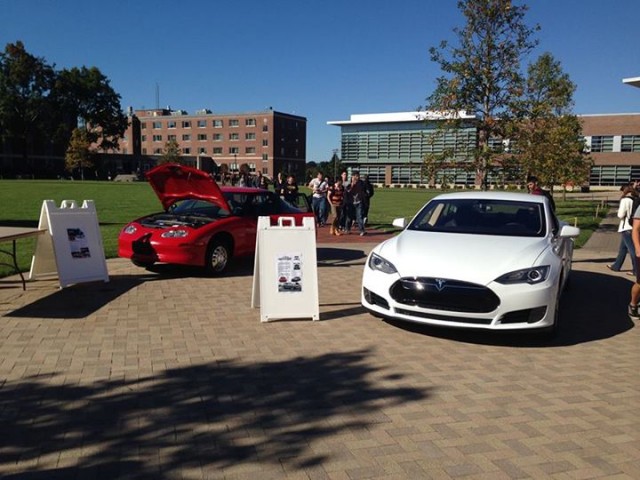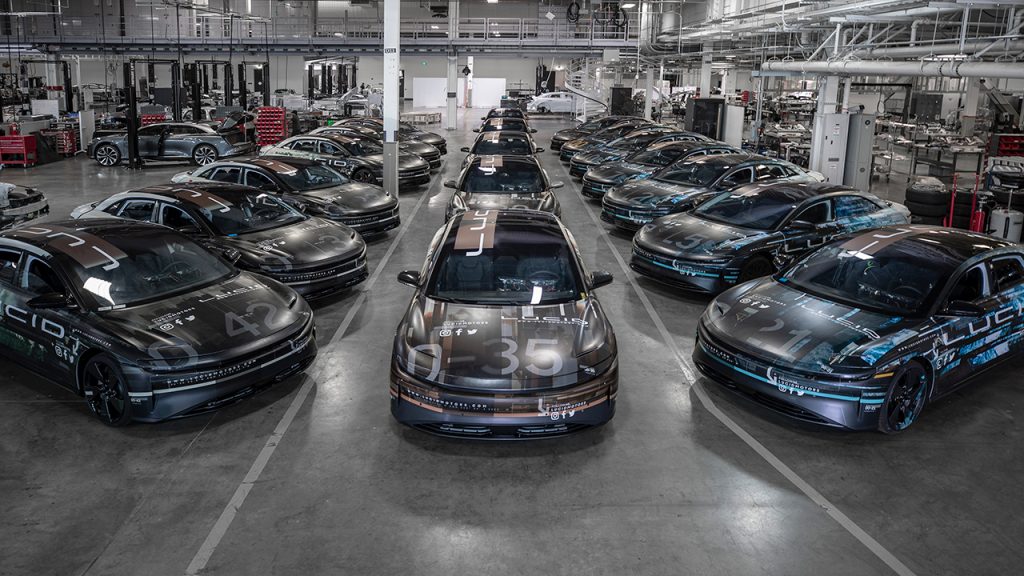

News
Tesla and EV-only carmakers are legacy auto’s karma for killing the electric car
Karma could be a cruel mistress. It has a tendency to sneak up from behind before delivering a cruel haymaker to the jaw. Karma takes a while to rev up sometimes, but when it comes, things change, and sometimes these changes can be painful. Considering the state of the auto market, as well as the momentum carried by companies like Tesla, Lucid Motors, and Rivian, it appears that legacy carmakers are finally dealing with some well-deserved karma — for killing the electric car.
The general death of EVs amidst the emergence of the internal combustion engine during the early days of automobiles is understandable. Back then, fossil fuels presented a cheap, efficient way to travel, with vehicles like the Baker Electric and the Porsche P1 taking a very long time to charge. However, the death of the electric car that happened in the late 90s was something that is far more difficult to justify.
During the mid-90s, a modern electric vehicle was created by General Motors, and it could have been the driving force of a change in the motoring world. The vehicle, dubbed the EV1, was on the bleeding edge of tech at the time, with its three-phase alternating current induction motor and lead-acid (later changed to NiMH) battery. It had enough range for inner-city travel, it was fast, and it was sleek. But inasmuch as it was beloved by those who leased it, the EV1 was fated to meet an unfortunate demise.

In a series of events that inspired the creation of the documentary “Who Killed the Electric Car,” General Motors decided to discontinue the EV1, reclaiming the car from the leasees and destroying the vehicles. Segments of the acclaimed documentary depicted customers asking GM if they could just purchase the all-electric car, with some even holding demonstrations for the EV. But despite all these efforts, GM let the EV1 die, and most, save for a few, were unceremoniously crushed.
There were many speculations surrounding the EV1’s demise. General Motors insisted that the vehicle was not commercially viable. But the trend of large, gas-guzzling SUVs that followed the EV1 in GM’s lineup contributed to rumors that the electric car was killed because it represented a potential threat to the fossil fuel industry. In a sense, the electric car did die a painful, crushing death in the 90s, and it was not until Tesla came to the picture that EVs emerged as viable alternatives to gas-powered cars once more.
And it’s not like there was no resistance to the emergence of electric cars like Tesla, either. Tesla faced and continues to face strong opposition, and if it weren’t for its dedicated team and Elon Musk’s own stubbornness and resilience, the company could have followed the same fate as the EV1. But with vehicles like the Model S changing the game and cars like the Model 3 disrupting vehicle classes that used to be dominated by the internal combustion engine, it eventually became evident that this time around, it will be far more difficult to kill the electric car.

Amidst the success of companies like Tesla, even legacy automakers are playing catch up. Vehicles like the Jaguar I-PACE and the Chevy Bolt EV are representations of this. But even with these efforts, the pace of innovation in the electric vehicle segment is fast. Companies like Tesla work like tech companies, failing fast and failing forward. And now, legacy auto does not only have Tesla to contend with. Other premier electric cars from companies that are EV-only are coming. Tesla may have put EVs back on the map, but now, more companies are joining the fray.
There’s Lucid Motors with the Air, a hyper-luxury sedan that would likely put the Mercedes S-Class in its place. There’s the Rivian R1T and R1S, which bring luxury and comfort even in places off the beaten path. Even Bollinger Motors is attacking a small niche of rock-crawling vehicles with its no-nonsense, rough-and-tough B1 and B2. These are only the tip of the iceberg as well. Veteran auto is even getting increasingly dedicated to EVs, as evidenced by Porsche’s decision to revamp its entire factory in Zuffenhausen just to get the company ready for more electric vehicles like the Taycan.
It appears that this time around, killing the electric car will not be as simple or easy as before. Unlike the early 1900s, EVs now charge fast and they go the distance, and unlike the 90s, electric cars are now being embraced by mainstream consumers. There’s a demand for them, and EVs are now being noted for their performance. Electric cars are here to stay, and every single one that gets released is additional karma to an auto industry that appears to have dug itself far too deep into fossil fuels.

News
Tesla starts showing how FSD will change lives in Europe
Local officials tested the system on narrow country roads and were impressed by FSD’s smooth, human-like driving, with some calling the service a game-changer for everyday life in areas that are far from urban centers.

Tesla has launched Europe’s first public shuttle service using Full Self-Driving (Supervised) in the rural Eifelkreis Bitburg-Prüm region of Germany, demonstrating how the technology can restore independence and mobility for people who struggle with limited transport options.
Local officials tested the system on narrow country roads and were impressed by FSD’s smooth, human-like driving, with some calling the service a game-changer for everyday life in areas that are far from urban centers.
Officials see real impact on rural residents
Arzfeld Mayor Johannes Kuhl and District Administrator Andreas Kruppert personally tested the Tesla shuttle service. This allowed them to see just how well FSD navigated winding lanes and rural roads confidently. Kruppert said, “Autonomous driving sounds like science fiction to many, but we simply see here that it works totally well in rural regions too.” Kuhl, for his part, also noted that FSD “feels like a very experienced driver.”
The pilot complements the area’s “Citizen Bus” program, which provides on-demand rides for elderly residents who can no longer drive themselves. Tesla Europe shared a video of a demonstration of the service, highlighting how FSD gives people their freedom back, even in places where public transport is not as prevalent.
What the Ministry for Economic Affairs and Transport says
Rhineland-Palatinate’s Minister Daniela Schmitt supported the project, praising the collaboration that made this “first of its kind in Europe” possible. As per the ministry, the rural rollout for the service shows FSD’s potential beyond major cities, and it delivers tangible benefits like grocery runs, doctor visits, and social connections for isolated residents.
“Reliable and flexible mobility is especially vital in rural areas. With the launch of a shuttle service using self-driving vehicles (FSD supervised) by Tesla in the Eifelkreis Bitburg-Prüm, an innovative pilot project is now getting underway that complements local community bus services. It is the first project of its kind in Europe.
“The result is a real gain for rural mobility: greater accessibility, more flexibility and tangible benefits for everyday life. A strong signal for innovation, cooperation and future-oriented mobility beyond urban centers,” the ministry wrote in a LinkedIn post.
News
Tesla China quietly posts Robotaxi-related job listing
Tesla China is currently seeking a Low Voltage Electrical Engineer to work on circuit board design for the company’s autonomous vehicles.

Tesla has posted a new job listing in Shanghai explicitly tied to its Robotaxi program, fueling speculation that the company is preparing to launch its dedicated autonomous ride-hailing service in China.
As noted in the listing, Tesla China is currently seeking a Low Voltage Electrical Engineer to work on circuit board design for the company’s autonomous vehicles.
Robotaxi-specific role
The listing, which was shared on social media platform X by industry watcher @tslaming, suggested that Tesla China is looking to fill the role urgently. The job listing itself specifically mentions that the person hired for the role will be working on the Low Voltage Hardware team, which would design the circuit boards that would serve as the nervous system of the Robotaxi.
Key tasks for the role, as indicated in the job listing, include collaboration with PCB layout, firmware, mechanical, program management, and validation teams, among other responsibilities. The role is based in Shanghai.
China Robotaxi launch
China represents a massive potential market for robotaxis, with its dense urban centers and supportive policies in select cities. Tesla has limited permission to roll out FSD in the country, though despite this, its vehicles have been hailed as among the best in the market when it comes to autonomous features. So far, at least, it appears that China supports Tesla’s FSD and Robotaxi rollout.
This was hinted at in November, when Tesla brought the Cybercab to the 8th China International Import Expo (CIIE) in Shanghai, marking the first time that the autonomous two-seater was brought to the Asia-Pacific region. The vehicle, despite not having a release date in China, received a significant amount of interest among the event’s attendees.
Elon Musk
Elon Musk and Tesla AI Director share insights after empty driver seat Robotaxi rides
The executives’ unoccupied tests hint at the rapid progress of Tesla’s unsupervised Robotaxi efforts.

Tesla CEO Elon Musk and AI Director Ashok Elluswamy celebrated Christmas Eve by sharing personal experiences with Robotaxi vehicles that had no safety monitor or occupant in the driver’s seat. Musk described the system’s “perfect driving” around Austin, while Elluswamy posted video from the back seat, calling it “an amazing experience.”
The executives’ unoccupied tests hint at the rapid progress of Tesla’s unsupervised Robotaxi efforts.
Elon and Ashok’s firsthand Robotaxi insights
Prior to Musk and the Tesla AI Director’s posts, sightings of unmanned Teslas navigating public roads were widely shared on social media. One such vehicle was spotted in Austin, Texas, which Elon Musk acknowleged by stating that “Testing is underway with no occupants in the car.”
Based on his Christmas Eve post, Musk seemed to have tested an unmanned Tesla himself. “A Tesla with no safety monitor in the car and me sitting in the passenger seat took me all around Austin on Sunday with perfect driving,” Musk wrote in his post.
Elluswamy responded with a 2-minute video showing himself in the rear of an unmanned Tesla. The video featured the vehicle’s empty front seats, as well as its smooth handling through real-world traffic. He captioned his video with the words, “It’s an amazing experience!”
Towards Unsupervised operations
During an xAI Hackathon earlier this month, Elon Musk mentioned that Tesla owed be removing Safety Monitors from its Robotaxis in Austin in just three weeks. “Unsupervised is pretty much solved at this point. So there will be Tesla Robotaxis operating in Austin with no one in them. Not even anyone in the passenger seat in about three weeks,” he said. Musk echoed similar estimates at the 2025 Annual Shareholder Meeting and the Q3 2025 earnings call.
Considering the insights that were posted Musk and Elluswamy, it does appear that Tesla is working hard towards operating its Robotaxis with no safety monitors. This is quite impressive considering that the service was launched just earlier this year.








